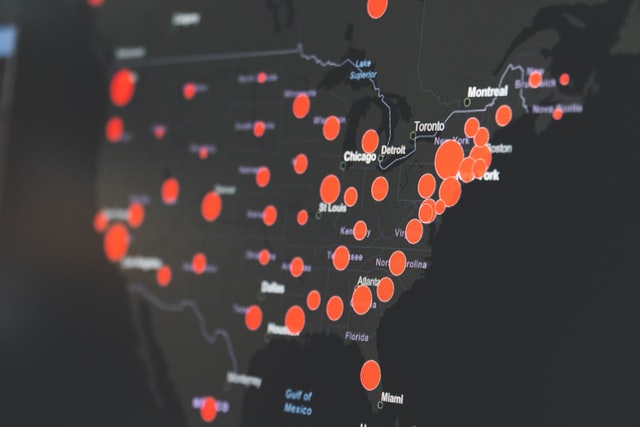
On Friday, the Bureau of Labor Statistics (BLS) will report on US employment and unemployment for April—a mid-April snapshot. The mid-March snapshot released in early April captured relatively little of the impact of the Covid-19 crisis. But between March 14 and April 18, more than 26 million Americans filed for unemployment benefits. It seems certain that Friday’s report will show a sharp deterioration in labor market conditions. Policymakers will be looking hard at these data as they consider how to respond to the unfolding crisis.
The data to be released on Friday come from two surveys—a survey of employers that provides the monthly US payroll jobs numbers and a separate survey of households, the Current Population Survey (CPS), that provides the nation’s official unemployment statistics. These surveys are the gold standard of data on the US labor market. But in the same way that the coronavirus has upended so much else, it has potentially made Friday’s data less reliable and more difficult to interpret than would ordinarily be the case.
One concern is that, because social distancing has disrupted normal data collection, fewer businesses and people may respond to the two surveys. The response rate to the payroll survey in March was 66%, 9 percentage points below its normal level. With many businesses shuttered and government call centers closed, the response rate in April could be even lower.
Social distancing requirements also have made collection of the household survey data more difficult. In the first month a household is in the CPS, a data collector typically conducts an in-person interview. The government is not currently sending data collectors to people’s homes. This means it will be especially difficult for them to recruit new households into the survey sample. In March, the CPS response rate was 73%, about 10 percentage points lower than in preceding months, and things could be worse in April.
Lower response rates create two problems. Because the surveys’ samples are smaller, the estimates are less precise. And if the businesses and households that do respond have had different labor market experiences than others, their answers may provide a biased picture of overall conditions.
The published payroll survey employment statistics reflect an adjustment based on the fact that, historically, jobs lost when businesses close have been roughly offset by jobs added at new businesses. Normally this adjustment works well. In this crisis, though, we can expect more job losses due to business closures and fewer jobs at firms just starting up. This means applying the standard adjustment would cause employment to be overstated. The BLS has announced that it will modify its procedures to reflect this reality, but absent evidence from a comparable period to guide a modified approach, there will be more uncertainty than usual about the published numbers.
It also may be more difficult than usual to interpret the April CPS data. With the exception of people on temporary layoff, to be counted as unemployed, a person must want to work, be available to work, and have searched actively for work within the last four weeks. In the current environment, many people who are out of work may have concluded there is little point in searching for a new position. As of mid-April, 24 states had entirely waived the requirement to search for work normally imposed on unemployment insurance recipients, and another 15 states and the District of Columbia had waived it under some circumstances. To make sense of the April unemployment numbers, we should look not only at unemployment but also at the counts of non-employed people who say they want work and are available but have not recently searched for a job.
In a typical month, the BLS employment report provides information that is widely recognized as among the most reliable provided by any government agency worldwide. This month, there is likely to be more than the usual amount of uncertainty about exactly what the data tell us.
© Katharine G. Abraham
Katharine G. Abraham is Professor of Economics, Professor of Survey Methodology, and Director of the Maryland Center for Economics and Policy
Read more on the coronavirus crisis:
"Coronavirus and the labor market," by Daniel S. Hamermesh
"Fighting a coronavirus recession," by Daniel S. Hamermesh
"Pandemics and the labor market—Then and now," by Karen Clay
"Pricing the lives saved by coronavirus policies," by W. Kip Viscusi
"Health effects of the coronavirus recession," by Christopher J. Ruhm
"The long-term consequences of missing a term of school," by Simon Burgess and Hans Sievertsen
"Coronavirus, telecommuting, and the labor market," by Nikos Askitas
"Expectations about Covid-19 social-distancing measures in Italy and their impact on compliance," by Guglielmo Briscese, Nicola Lacetera, Mario Macis, and Mirco Tonin
"The coronavirus crisis and the next generation," by Bart Cockx
"Korea: A paragon of dealing with coronavirus," by Sok Chul Hong
"Economic implications of postponing the Tokyo 2020 Olympic Games," by Peter J. Sloane
"The sudden growth of employee autonomy during the coronavirus lockdown," by Elisa Gerten and Michael Beckmann
"Mitigating the work–safety trade-off," by Tito Boeri, Alessandro Caiumi, Marco Paccagnella
"Trading off lives for jobs," by Daniel S. Hamermesh
"Trends in Covid-19 infection: What New York City neighborhoods tell us," by George J. Borjas
"Labor markets during the Covid-19 crisis: A preliminary view," by Olivier Coibion, Yuriy Gorodnichenko, Michael Weber
"Did California’s shelter-in-place order work? Early coronavirus-related public health effects," by Andrew Friedsen, Drew McNichols, Joseph J. Sabia, Dhaval Dave
"200 billion hours to spend: The Covid-19 opportunity to upskill," by Peter Siminski, Emil Temnyalov
"The CARES Act—Massive government intervention in the economic crisis," by Richard Prisinzano
Please note:
We recognize that IZA World of Labor articles may prompt discussion and possibly controversy. Opinion pieces, such as the one above, capture ideas and debates concisely, and anchor them with real-world examples. Opinions stated here do not necessarily reflect those of the IZA.